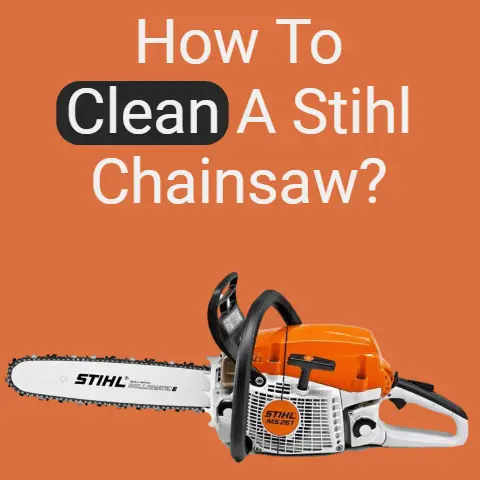how to work chainsaw (Safety First!)
Memories of the Saw
I remember the first time I picked up a chainsaw. It was an old Husqvarna, heavy and a bit intimidating. My father stood nearby, watching with a knowing smile. He taught me the ropes, making sure I understood that safety was paramount. Now, let me walk you through how to work a chainsaw safely and effectively.
A Family Tradition
For my family, chainsawing was more than just a task; it was a tradition. My grandfather used to cut firewood every autumn, a ritual that signaled the arrival of colder months. He would often tell stories of his earlier days in the forest, where he learned not just the technical skills but the respect for nature that comes with wielding such a powerful tool.
Lessons Learned
One lesson that stuck with me was about patience. My father used to say, “You can’t rush a tree to fall or a log to split.” This wisdom applies to many aspects of life but is particularly true with chainsaws. Taking your time ensures safety and precision.
Prerequisites and Required Materials
Before we start, let’s ensure you have everything you need:
- Chainsaw: Choose one suitable for your task.
- Protective Gear: Helmet, goggles, ear protection, gloves, chainsaw chaps, and steel-toed boots.
- Fuel and Oil: Properly mixed fuel and bar oil.
- Tools: Wrench and screwdriver for maintenance.
- First Aid Kit: Always have one nearby.
Knowledge You Need
- Basic Chainsaw Mechanics: Understand how your chainsaw works.
- Tree Felling Basics: If cutting trees, know the basics of tree felling.
- Emergency Procedures: Know what to do if things go wrong.
Safety First!
Protective Gear
Safety is not just a priority; it’s the foundation of using a chainsaw. Never skimp on protective gear. A helmet with face shield and ear protection is essential. Chainsaw chaps can prevent severe leg injuries. Steel-toed boots and gloves offer additional protection.
Environment Check
Before you start, survey your surroundings. Is there anyone nearby? Are there obstacles or power lines? Clear the area around your work zone to reduce risks.
Getting Started with Your Chainsaw
1. Preparation
- Fueling: Use the correct fuel mix. Fill up your chainsaw in a well-ventilated area, away from open flames.
- Oil Check: Ensure the bar oil reservoir is full to keep the chain lubricated.
2. Inspection
- Chain Tension: Check that the chain is properly tensioned. A loose chain can derail and cause injury.
- Condition of Chain: Look for worn or damaged teeth. Sharpen or replace as needed.
Starting Your Chainsaw
3. Safe Starting
- Secure Position: Place the chainsaw on level ground.
- Engage Brake: Activate the chain brake for safety.
- Grip Firmly: Hold the top handle with one hand, and use your foot to secure the rear handle.
- Pull Cord: In a controlled motion, pull the starter cord until the engine fires.
Warning! Never start a chainsaw while holding it in mid-air.
Cutting Techniques
4. Basic Cutting
- Grip and Stance: Stand with feet shoulder-width apart for stability. Use both hands to grip firmly.
- Contact with Wood: Start with the chain moving at full speed before contacting the wood.
- Cutting Motion: Use smooth, steady pressure. Let the saw do the work.
5. Advanced Cutting
For more complex tasks like felling trees:
- Plan Your Cut: Determine where you want the tree to fall.
- Notch Cut: Cut a notch on the side facing where you want it to fall.
- Felling Cut: Make a cut on the opposite side slightly above the bottom of the notch.
Caution! Always stand to the side of the falling tree path.
Maintenance and Troubleshooting
6. Regular Maintenance
- Sharpening Chain: A sharp chain cuts more efficiently and safely.
- Cleaning Air Filter: Keep it clean to ensure optimal engine performance.
- Checking Spark Plug: Replace if worn or damaged.
Troubleshooting Tips
If your chainsaw won’t start:
- Check fuel mix and spark plug.
- Ensure choke is used correctly.
- Inspect if chain brake is engaged.
Common Questions and Concerns
How do I know if my chain is dull?
A dull chain produces fine sawdust instead of wood chips and requires more force to cut.
What should I do if my chainsaw gets stuck?
Turn off the engine and use a wedge or lever to free it without damaging the saw or yourself.
Conclusion
Using a chainsaw safely requires preparation, knowledge, and attention to detail. Always prioritize safety by wearing protective gear and maintaining awareness of your surroundings.
FAQ Section
How often should I sharpen my chainsaw chain?
Sharpen it every few hours of use or whenever it starts producing fine sawdust.
Can I use my chainsaw in wet conditions?
Avoid using it in rain or wet conditions as it increases risk of slipping and accidents.
What is kickback and how can I prevent it?
Kickback happens when the nose of the bar contacts an object or is pinched, causing the saw to jerk back. To prevent it, avoid cutting with the tip of the bar and maintain a firm grip.






